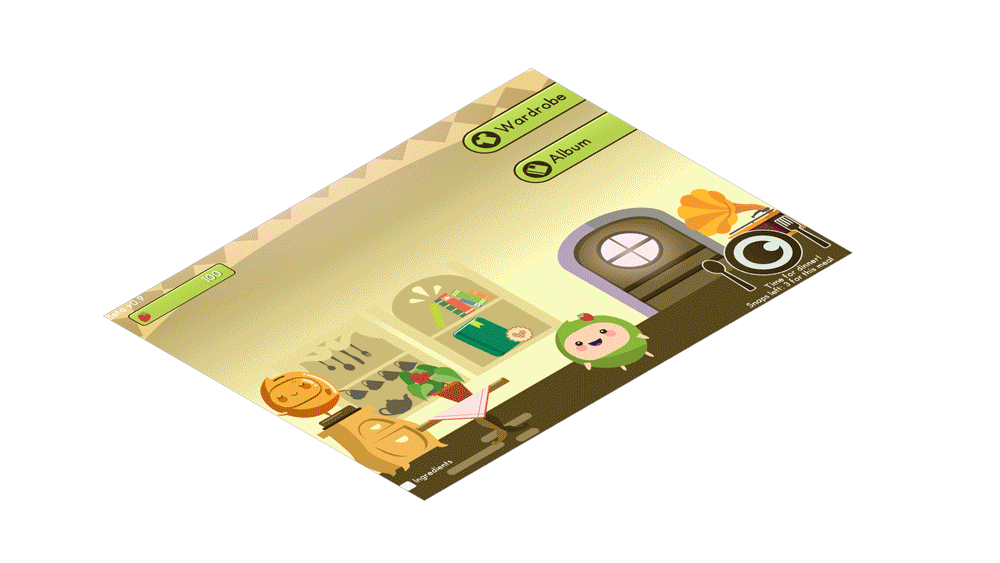top of page
PUPIL: LEARNING IN MIXED REALITY
FALL 2018, CARNEGIE MELLON UNIVERSITY
Pupil is a semester-long student project at the Entertainment Technology Center (ETC), Carnegie Mellon University aiming to create educational prototypes on mixed reality platforms for the future classroom, where AR gears and spatial display are readily available as teaching tools. Through multiple prototypes, our team aims to come up with educational design patterns in AR.
The client who sponsored this project is Mark J. W. Lee, an educational technology and learning sciences researcher and practitioner, currently a visiting scholar at Carnegie Mellon University and an adjunct senior lecturer at Charles Sturt University, Australia.

LITTLEMOOCHI: AN AI-POWERED
VIRTUAL PET FOR K12 EATING EDUCATION
PITTSBURGH, PA
OVERVIEW
LittleMoochi is a startup initiated by Carnegie Mellon University students and alumni. We are developing a mobile app to help children cultivate healthy eating habits with an AI-powered virtual pet.
I joined LittleMoochi as the Lead Artist timely when the founding team sought to polish the product after they proved the concept with market research. I didn't hesitate to jump in - an educational game for meaningful changes (with a cute character to animate) got my immediate click.
Top three design pillars

1.
Safe
2.
Fun
3.
Personalized


PROBLEM SPACE
Obesity upsets the wellness of all age groups. Though pediatricians suggest that forming healthy eating habits in one's childhood will lessen the likelihood of becoming an obese adult, Summer (CEO & mother of 5-year-old) found many children picky eaters who preferred added sugar, deep fried food etc. over whole veggie or fruits. Endeavoring to make a positive change, she founded LittleMoochi to create a fun experience for children that encourage healthy eating behaviors.

Pediatricians say...
Age 6-12 are opportune for forming good eating habits.
- JessicaMagnu, RDN
BUT Parents say...
My children don't like healthy food.
71% of parents in the USA give up making efforts
APPROACH
We choose Gamification as the primary approach to engage our little guests (I love how Theme Parks call their visitors "guests" and how the term applies to video games).
Gamification gave us the best chance to build the product closely around our design pillars - individualized profile and customized tasks are just among many possibilities we brainstormed.


Roadmap of guest need to guest learning outcome
Emphasizing on the sense of empathy and reward, Moochi helps along the way of translating a parent pain point to real life behavioral change.
Art evolution based on key playtest insight:
PROCESS
1. We set up a lo-fi clickable prototype using InVision primarily to collect feedback regarding arts and styles, and also provide usability insights.

1. Kids like more elaborated room decor
2. Keep text minimal

2. We used Unity to build the app. Since I took relevant courses in my grad program at CMU's Entertainment Technology Center (ETC), I could quickly pick up the tools. Therefore the collaboration between the developers and me had minimal pain.
Art Assets
Creating and managing character, environment and UI art assets. Making sure they're visually holistic and keeping them organized.
Animations
Animating the character and UI components. Ideating and creating interface interactions and choreography.
Unity-Git workflow
Sharing the Unity project with the team using Git. Communicating on version control when needed.

3. So far we have been Beta testing 4 versions of LittleMoochi. We're working closely with the Childhood Obesity Prevention Association of Pennsylvania to get more parents and children involved. Our plan to expand the features is still going full-speed!




LEARNINGS
1. Working in a "liminal" environment
In Arts, a "liminal" state can refer to somewhere at a blurry boundary or threshold. LittleMoochi as a side project besides my work at PHRQL, feels "liminal" to me because of the strong tie to the CMU community, and meanwhile, the team aspires to go to the market. I deeply enjoy this environment as it permits the freedom to explore design ideas as an academic project, at the same time it gives me the opportunity to learn real startup operation.
2. Understand the audience
LittleMoochi's users, kids of 6-12 are wildly different target audience from that of any project I've ever done. It's critical for me to learn the specific need of their age group through one-to-one interviews, literary research and expert interview. Believing in "know what I don't know" eventually stoped me from making assumptions based on my own knowledge and design for myself
Team

LittleMoochi is a dynamic and rapidly expanding team with a strong connection to the CMU community. Members include students and alumni from the School of Computer Science, Tepper School of Business and Entertainment Technology Center.
Summer Xia - CEO
Zhuyun Dai - CTO
Yi Xu - COO
Julie Ai Jun Qin - Finance/Marketing
Qiqi Feng - Designer/Artist
Dennis Lo - Developer
Shawn Sun - Developer
bottom of page